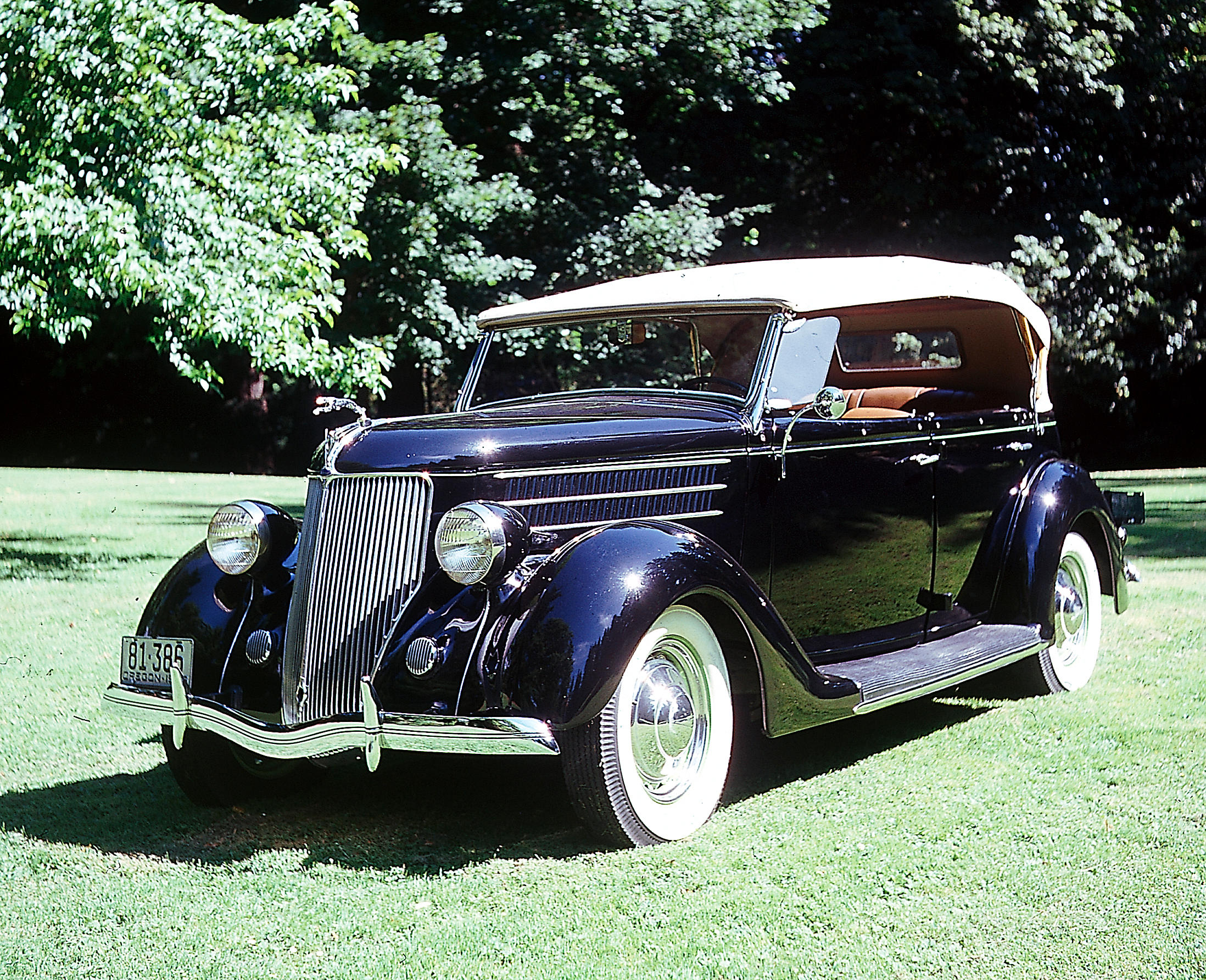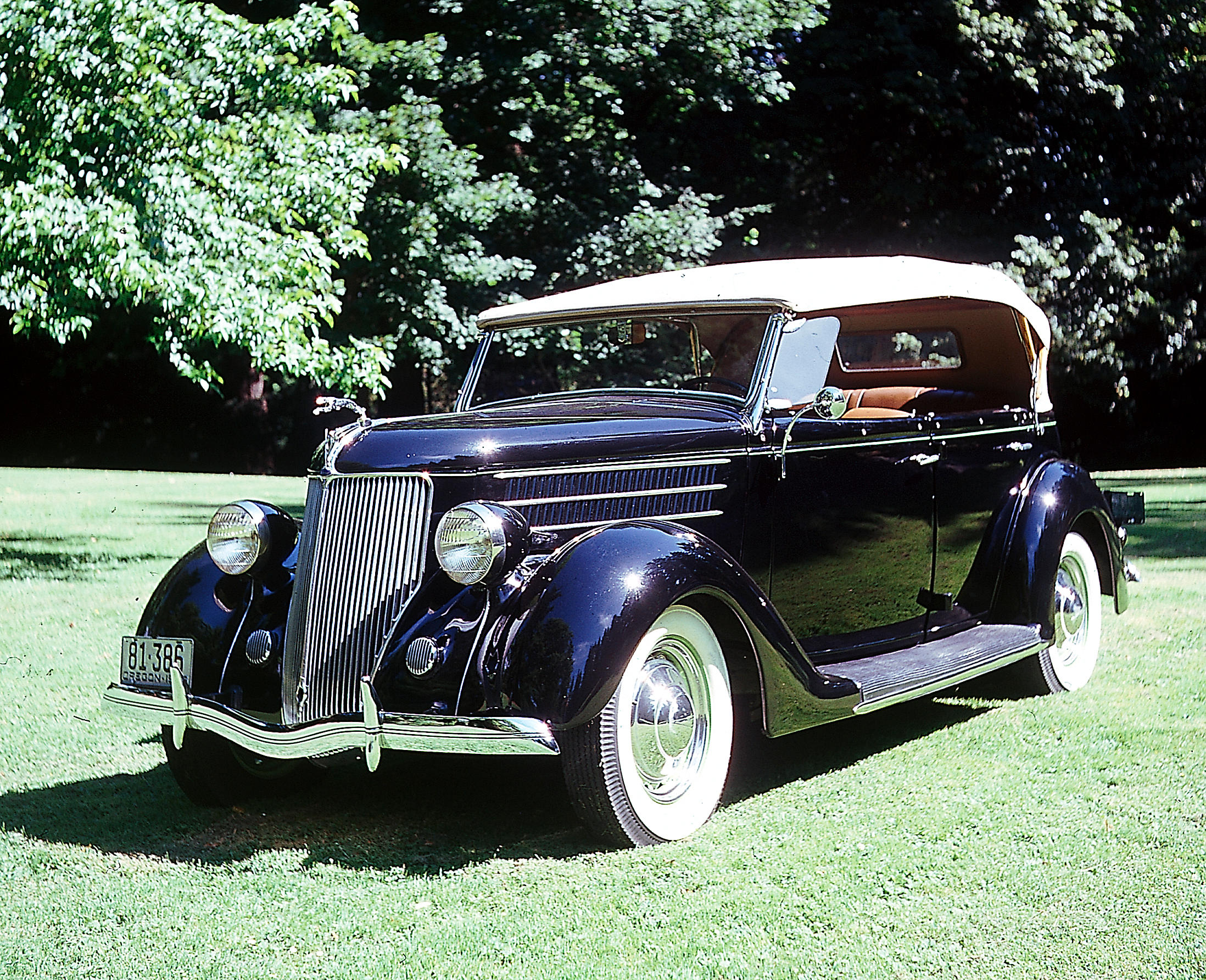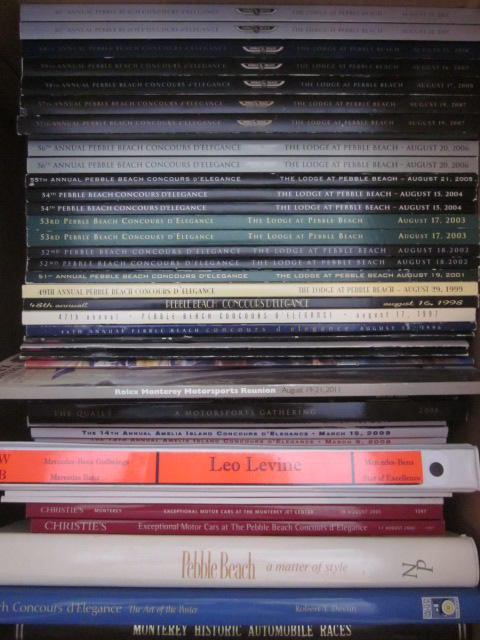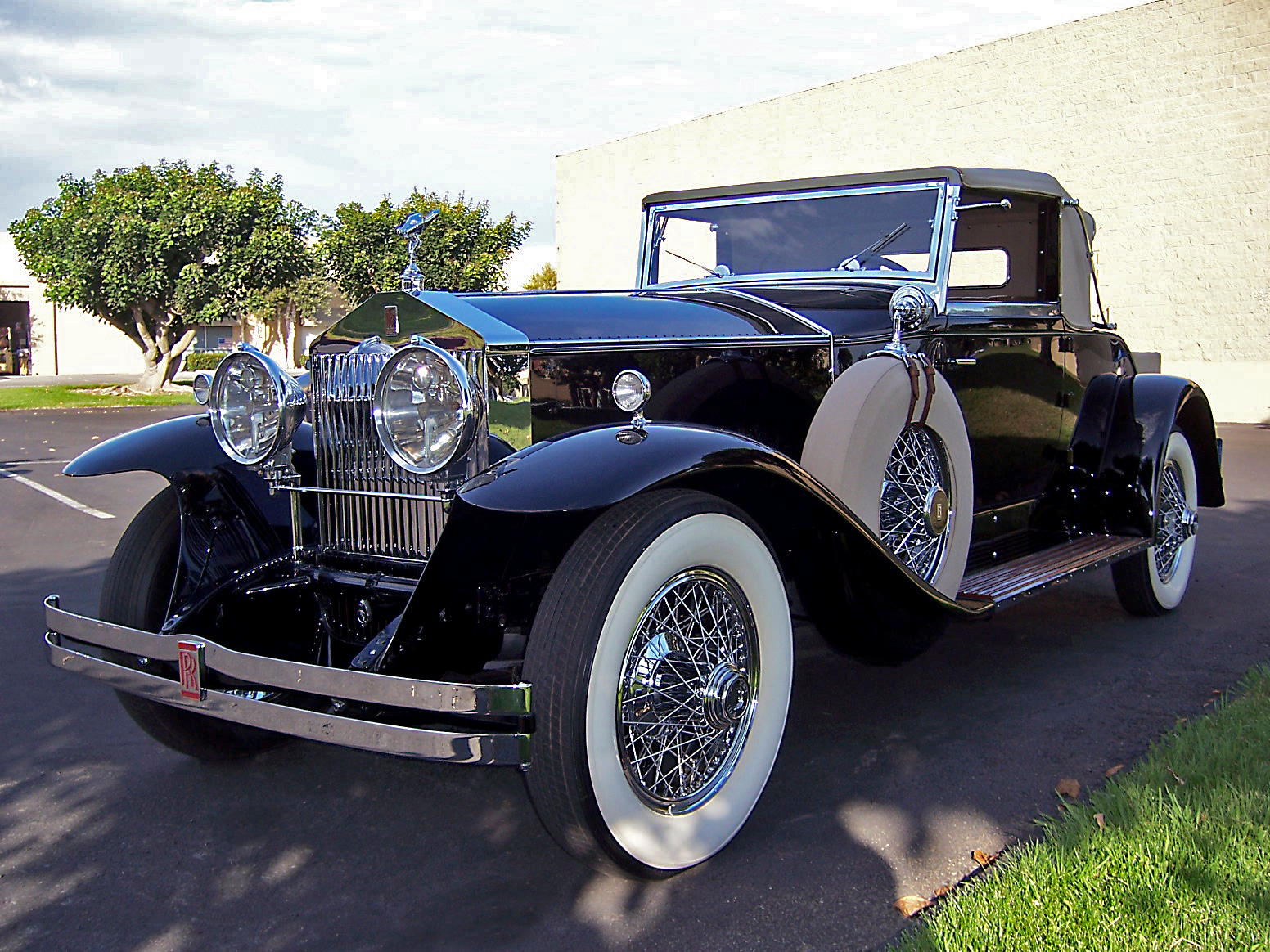Pebble Beach Concours d'Elegance Class Winning 1931 PACKARD 840 DELUXE EIGHT CONVERTIBLE VICTORIA COACHWORK BY WATERHOUSE Car No. 840-173 Chassis No. 188992 Engine No. 189054 Black with burgundy leather interior and black cloth top Engine: L-head, eight cylinder, in-line, single updraft carburetor, 385ci, 120bhp; Gearbox: four speed manual; Suspension: live axles with semi-elliptic leaf springs; Brakes: four wheel mechanical drum. Left hand drive. In 1930 Packard was the prestige marque in America. Justly renowned for the smooth power of its eight cylinder engines, the stately ride of its quality chassis and the uniform excellence of its materials and manufacture, owning a Packard was a statement of success. More than that it was a tangible reward, recognition in comfort, quiet performance, style and luxury that the Packard owners could enjoy on a daily basis. Packard's successful advertising campaign, 'Ask the man who owns one' acknowledged, not only for their clients but also for the larger world, that Packard owners were trendsetters whose opinions mattered. Introduced in August 1930, the Eighth Series Packards reflected, but still did not fully recognize, the transformation in both the world's economy and the automobile market which was being wrought by the stock market crash of October 1929 and the ensuing economic depression. The effect of the Crash was still being assessed, and every positive development in the economy and financial markets was seized as indication that things weren't as bad as they might seem, or were going to get better. There had been no time following the Crash for Packard to make substantial changes in its models or product lines. There were alterations, however, including more power by adopting the improved cylinder block with larger intake and exhaust ports of 1930s 734 Speedster in the Deluxe Eights along with larger intake and exhaust manifolds. Vacuum tank fuel feed was replaced by a mechanical fuel pump and chassis lubrication was now automatic rather than by hand pump. More significantly, Packard completed its long term plan of substantially consolidating all custom body building in its own coachworks. Long planned as a way of heightening Packard's market position and capturing the lucrative custom coachbuilding commissions, it instead became a way of keeping Packard staff employed as sales volumes plummeted. The financial crisis in the nation and in luxury automobiles in particular was hard to miss and Packard responded in the only way its lead times and design cycles allowed: it lowered prices. The five passenger 840 Sedan price dropped over 15 from the comparable Seventh Series model at introduction, then dropped again in September. But if it was any help the effect was invisible as sales all but stopped. Between the Depression and Packard's consolidation of custom coachbuilding in its own shops, Eighth Series Packards with coachbuilt bodies are exceedingly rare. One of those favored with a Eighth Series commission was Waterhouse. Established only in 1928 by Charles Waterhouse and his son in Webster, Massachusetts, Waterhouse had constructed a Convertible Victoria body for Packard in 1928 for the marques' display at the Paris Show. Built on a nearly impossible schedule, it was based on a design which Waterhouse designer George Weaver created from a photograph of a similar style supplied by Packard. Subsequently, Waterhouse became renowned for its Convertible Victoria designs which employed ingenious top mechanisms that folded almost flat with the low window sills. The design and execution of the Waterhouse Convertible Victorias is something special. With their low window sills and lowered rear body to clear the folded top, they are sporting but at the same time refined and elegant. Typically executed by Waterhouse on long wheelbase chassis, such as the 140 1/2 inch Packard 840, the passenger compartment ends almost exactly at the rear wheels' centerline, accenting the long, clean lines
Pebble Beach Concours d'Elegance Class Winning 1931 PACKARD 840 DELUXE EIGHT CONVERTIBLE VICTORIA COACHWORK BY WATERHOUSE Car No. 840-173 Chassis No. 188992 Engine No. 189054 Black with burgundy leather interior and black cloth top Engine: L-head, eight cylinder, in-line, single updraft carburetor, 385ci, 120bhp; Gearbox: four speed manual; Suspension: live axles with semi-elliptic leaf springs; Brakes: four wheel mechanical drum. Left hand drive. In 1930 Packard was the prestige marque in America. Justly renowned for the smooth power of its eight cylinder engines, the stately ride of its quality chassis and the uniform excellence of its materials and manufacture, owning a Packard was a statement of success. More than that it was a tangible reward, recognition in comfort, quiet performance, style and luxury that the Packard owners could enjoy on a daily basis. Packard's successful advertising campaign, 'Ask the man who owns one' acknowledged, not only for their clients but also for the larger world, that Packard owners were trendsetters whose opinions mattered. Introduced in August 1930, the Eighth Series Packards reflected, but still did not fully recognize, the transformation in both the world's economy and the automobile market which was being wrought by the stock market crash of October 1929 and the ensuing economic depression. The effect of the Crash was still being assessed, and every positive development in the economy and financial markets was seized as indication that things weren't as bad as they might seem, or were going to get better. There had been no time following the Crash for Packard to make substantial changes in its models or product lines. There were alterations, however, including more power by adopting the improved cylinder block with larger intake and exhaust ports of 1930s 734 Speedster in the Deluxe Eights along with larger intake and exhaust manifolds. Vacuum tank fuel feed was replaced by a mechanical fuel pump and chassis lubrication was now automatic rather than by hand pump. More significantly, Packard completed its long term plan of substantially consolidating all custom body building in its own coachworks. Long planned as a way of heightening Packard's market position and capturing the lucrative custom coachbuilding commissions, it instead became a way of keeping Packard staff employed as sales volumes plummeted. The financial crisis in the nation and in luxury automobiles in particular was hard to miss and Packard responded in the only way its lead times and design cycles allowed: it lowered prices. The five passenger 840 Sedan price dropped over 15 from the comparable Seventh Series model at introduction, then dropped again in September. But if it was any help the effect was invisible as sales all but stopped. Between the Depression and Packard's consolidation of custom coachbuilding in its own shops, Eighth Series Packards with coachbuilt bodies are exceedingly rare. One of those favored with a Eighth Series commission was Waterhouse. Established only in 1928 by Charles Waterhouse and his son in Webster, Massachusetts, Waterhouse had constructed a Convertible Victoria body for Packard in 1928 for the marques' display at the Paris Show. Built on a nearly impossible schedule, it was based on a design which Waterhouse designer George Weaver created from a photograph of a similar style supplied by Packard. Subsequently, Waterhouse became renowned for its Convertible Victoria designs which employed ingenious top mechanisms that folded almost flat with the low window sills. The design and execution of the Waterhouse Convertible Victorias is something special. With their low window sills and lowered rear body to clear the folded top, they are sporting but at the same time refined and elegant. Typically executed by Waterhouse on long wheelbase chassis, such as the 140 1/2 inch Packard 840, the passenger compartment ends almost exactly at the rear wheels' centerline, accenting the long, clean lines















Testen Sie LotSearch und seine Premium-Features 7 Tage - ohne Kosten!
Lassen Sie sich automatisch über neue Objekte in kommenden Auktionen benachrichtigen.
Suchauftrag anlegen